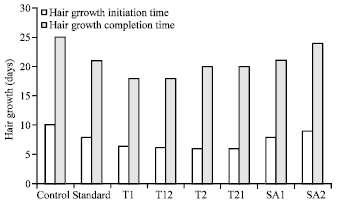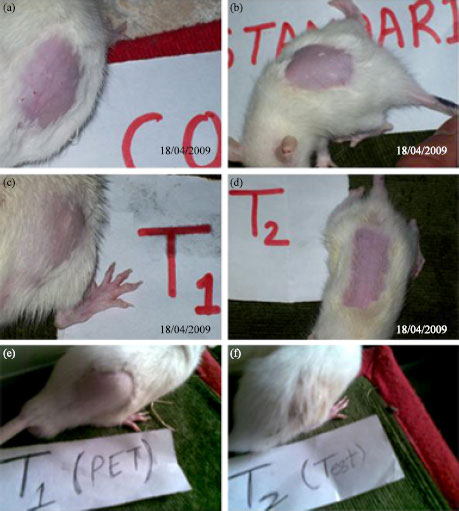Research Article
In vivo Hair Growth Activity of Herbal Formulations
Department of Pharmaceutical Sciences, HNB Garhwal University Srinagar, Garhwal, India
A. Semalty
Department of Pharmaceutical Sciences, HNB Garhwal University Srinagar, Garhwal, India
Geeta P. Joshi
Department of Chemistry, HNB Garhwal University Srinagar, Garhwal, India
M. S.M. Rawat
Department of Chemistry, HNB Garhwal University Srinagar, Garhwal, India














dr.muhammad Afzal Reply
Indeed it is great pleasure to read your reseach.I want to try this research for me. My age is 58 and middle area of head is bald.I have prepared this ointment with the extract from petroleum ether.Two of the herbs are trigonella foem-kasuri methi seeds and other herbis semscarpus anacadium fruit.The third one trigonella corniculata is not clear to me. is it not the same as methi dana if not please let me know.I have started using both the herbs extract in base alovera fresh in cream form.I love to grow my hair in natural process.I have prepared cream taking equal parts of both exracrs.One week past and I using it regularly.
Dr. Mona Semalty
Thanks for giving attention to my research work. Its good you are trying the same on youself. But i think you have not read the article properly. In our opinion Semescarpus does not show good effects and it may sensitize the scalp. So use Kasuri methi and plain methi dana in cream form and try... Certainly it will give good benefits. Best of luck.
swati rauthan Reply
i am really excited to read this article because a). its where i studied from
b). i am also doing research on alopecia
c). i never knew such researches are undergoing in the university
so i am glad reading this
Kishor Adhikari Reply
Hello sir,
I am very happy to see such a good method for hair growth promoting activity and aloepecia.
Inspiring from your research, i am also conducting a research on "Evaluation of hair growth promoting activity and antifungal activity of Maharanga bicolor and Hibiscus rosa-sinensis, In which we are preparing a formulation by mixing petroleum ether extract of above mentioned plant in fresh aloe vera leaf gel but we are unable to make a good and homogenously mixed gel. It is very difficult to mixed aloe vera gel and petroleum ether extract may be due to its lipophilic and hydrophilic nature.
So, I wish some suggestions sothat i can conduct research smoothly.
Thank you